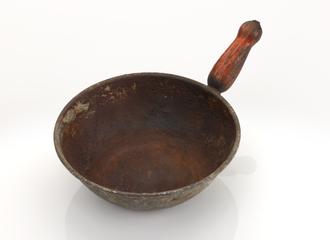

Two Bifurcated needles for use in smallpox vaccination
Bifurcated needles have two prongs and were developed in 1968. A small drop of smallpox vaccine is placed between the prongs and 15 punctures are made into the skin. The skin of the person to be vaccinated is not disinfected beforehand as this kills the vaccine.
The needles were easy to use and sterilise (by boiling or passing through a flame) and the technique could be learnt by anyone, making widespread effective vaccination possible. The needles replaced the older gun injectors and hi-tech jet injectors. These types of needles were used as part of the World Health Organisation’s (WHO) smallpox eradication campaign. WHO officially announced that they had achieved their goal in 1979. However, small samples have been kept in government laboratories in both the USA and Russia. There have been fears that these reference samples could be used as the raw material for biological weapons.
Details
- Category:
- Public Health & Hygiene
- Object Number:
- 1979-561
- Materials:
- metal (unknown)
- Measurements:
-
overall: 51 mm 0.006 kg
- type:
- vaccination needle
- credit:
- Institute of Child Health



